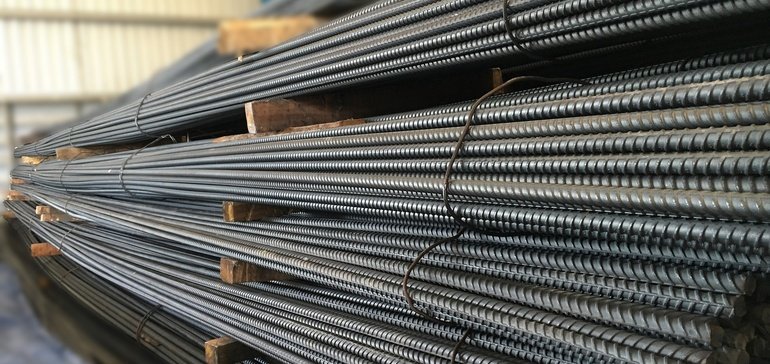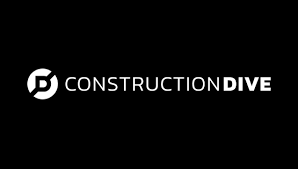As material prices jump, contractors cope any way they can.
AUTHOR: Joe Bousquin
PUBLISHED: Feb. 17, 2021
Late last year, Mike Taylor was paying around $750 per short ton for the rebar he uses in his concrete pours. Now, that price has spiked closer to $900, a 20% increase in a little over a month.
“That could mean an extra $200,000 on a concrete job,” said Taylor, CEO of Pompano Beach, Florida-based Current Builders, a general contractor that focuses on commercial and multifamily structures. “We’re seeing a lot of upwards pressure.”
At Grand Rapids, Michigan-based Rockford Construction, one of the 400 largest contractors in the country, director of preconstruction Mike Miner has been scrambling to sub in thermoplastic polyolefin roofing panels on projects where he might have used steel in the past.
The reason? His suppliers hit him with two price hikes over the holidays, one right before Christmas, the other a week later when he returned to work after the new year.
“It’s affecting jobs where we thought metal-insulated panels on the outside would be cheaper,” Miner said. “But now, we’re looking at jobs and saying, ‘Is that roof really going to be metal?’ Because I don’t think it is now.”
Taylor and Miner aren’t alone. Across commercial construction, steel price increases in recent weeks have caused contractors to rework the material costs on their jobs. And it’s not just steel, either. Lumber prices, which leaped up toward the beginning of the pandemic before coming back down last summer, have also shot up again recently.
Prices of both lumber and steel — two primary building materials — have surged anywhere from 20% to 25% recently, according to Daniel Pomfrett, national director of forecasting and analytics at construction cost tracking firm Cumming.
Over the past year, softwood lumber spiked 73%, according to the Producer Price Index released this morning for January. Iron and steel scrap has surged 50.8% in the last 12 months, including a 25.8% jump from November to December, followed by another 20.6% jump from December to January.
Steel, lumber prices have risen over the past year
| Material | % change, Dec. 2020 to Jan. 2021 |
% change Jan. 2020 to Jan. 2021 |
|---|---|---|
| Fabricated structural metal products | 0.5% | 3.2% |
| Iron and steel | 8.2% | 15.6% |
| Steel mill products | 5.2% | 7.4% |
| Softwood lumber | 14% | 73% |
SOURCE: Associated Builders and Contractors analysis of BLS data
A recent National Association of Home Builders analysis found that spikes in softwood lumber prices in the wake of the COVID-19 pandemic have caused the price of an average, new single-family home to increase by nearly $16,000. One high-end custom home builder in Birmingham, Alabama, reported to the NAHB that the price of a lumber framing package on an identically sized home had more than doubled over the past year, from $35,000 to $71,000.
The price gains are having a ripple effect. Construction observers say costs for drywall, copper, steel studs and even vinyl siding have risen, as well as those for other items that include steel.
“It’s affecting appliances. Steel is in hardware. It’s just in a lot of products on the job,” Taylor said. “We’re feeling strong price pressure increases pretty much down the line.”
Supply chain woes
The reasons why range from factories that pulled back production when demand dropped in early 2020 still not running at capacity, lingering supply chain hiccups that have caused ships to stack up outside of ports, tariffs on lumber and even last summer’s wildfires in the West. Mostly, though, all the spikes can be traced back to a central theme.
“The short answer is the pandemic,” said Associated General Contractors of America Chief Economist Ken Simonson, who closely tracks construction costs on a weekly basis in his Data Digest newsletter. “The supply chain is still being affected in a number of ways.”
He points to the 37 ships, packed with goods from China and elsewhere that were anchored off Southern California at the beginning of February. Other ships were clogging the wharf as an outbreak of COVID-19 among dockworkers meant there wasn’t enough personnel to unload them. There has also been a shortage of empty shipping containers in China to pack those goods into, as the pandemic has twisted global trade’s back-and-forth cadence.
Simonson said those kinds of lingering supply chain snafus could end up muting the anticipated rebound in construction activity in the latter half of 2021, especially in markets where contractors face high material costs, a lack of supply, or both.
“First off, construction demand will remain spotty, both geographically, and by project type,” Simonson said. “Any owner who is expecting to build new or renovate had better factor in the likelihood that there will be delays, and depending on how the risk is shared with contractors, price increases.”
Hoarders in the wings
Indeed, Miner has seen the impacts of scarcity in his Midwest markets, where contractors last year started hoarding lumber, just so they could keep building.
“It got to the point where there was a lot of our trade contractors that were going and buying just full bunks of wood, anywhere at any price,” Miner said.
That scarcity rippled down the supply chain, where he said lumber supply houses wouldn’t order lumber to keep in inventory, for fear that prices would drop and they’d be squeezed on the other end.
With the cost trend in 2021 only going in one direction so far — up — he worries that it won’t be long before any owners and developers who were considering getting back to work find another reason to stay on the sidelines.
“There’s going to be some angst from owners waiting to see what lumber is going to do before they decide if they want to turn their project on,” Miner said. “With everything else going on, and then lumber putting another 30% on top, everybody says, ‘Never mind, I’m not going to build this year.’”
Dealing with it on the job
For jobs in process, though, contractors will need to stay on their toes so they don’t get caught on the wrong side of a cost crunch.
Evidence of that has been seen, as many contractors engaged in survival bidding during the first part of the pandemic, where they bid less than the job would cost them, just to stay in business. Indeed, last month, Simonson noted that since April, average bids have only increased 0.1%, while material costs rose 8.1%.
Contractors across the country are reacting to the shortages and price jumps in a variety of ways:
Lowering costs, shortening schedules. In Miner’s markets, contractors that have been working through their backlogs now are trying to offset material cost increases by lowering labor costs, or trying to shorten project length to make up the difference.
“People are getting aggressive to try to build their backlogs up again,” Miner said. “They’re saying they can do it in eight months instead of nine by pushing their people harder, and doing it faster than they’ve ever done it before.”
Trying new materials. Rockford has been working with owners on existing projects to sub in different materials where they make sense, to keep jobs on track.
For example, while OSB is normally more expensive than plywood, that’s not necessarily true right now, so when plywood is cheaper, Miner will spec it instead. Also, whereas composite panels with a rubber backing are usually a premium, architectural element, they’re now an option for exterior cladding, since the price spread compared to steel isn’t that large currently.
“If you price steel and steel is too expensive, we’re going to go find a different material” such as the TPO roof panels Miner subbed in on his recent project. “I think a big thing most people underestimate in construction is how nimble we are,” Miner said. “Cost volatility can hamstring projects for a while, but it’s only a matter of time before we find a different solution.”
“There’s going to be some angst from owners waiting to see what lumber is going to do before they decide if they want to turn their project on.”
Shorter bid times. For Taylor and Current, that solution has been shorter timeframes on bid offers. For instance, whereas a bid in the past may have been valid for half a year, today that could be shortened to a single month.
“Our quotes and proposals are typically only good for 30 to 45 days now,” Taylor said. “If we know it’s a big project and they’ll take longer for the RFP, we’ll make it 60 days, but we won’t go longer than that.”
Contractual changes. Quinn Murphy, a construction attorney at Sandberg Phoenix in St. Louis, advises clients to try to write in contingencies for material cost increases up front in the form of force majeure clauses.
“We’ll go so far as to include a definition of what a significant price increase would be, in terms of a percentage,” he said, which might start at 50%. “That way, you avoid the argument with the owner who says, ‘Well, I hate that you have to take a bath on this, but you have to take it.’”
Relying on relationships. For a job that’s begun, however, Murphy said contractors may have more relationship leverage than they think, and should first try to go back to owners and explain the situation.
“Relationship capital goes a long way,” he said.
Other legal arguments. If that approach doesn’t work, contractors can make what he refers to as a “lack of collectability” argument.
“Basically, that’s where you say if you were to perform this contract, it would put you out of business,” Murphy said. “So if they sued for breach of contract, they might get a judgment, but you wouldn’t have any money to pay it, so there’s really no benefit for the owner going down that road.”
Negotiations. It’s better for contractors and owners to negotiate a mutually beneficial outcome. That’s particularly true because the pandemic is ongoing, and courts haven’t created wide-ranging case law on whether impacts from the coronavirus are a viable defense for breaking contract. That has incentivized owners to work things out with contractors in the current environment.
“It’s kind of resulted in a little bit more cooperation out of owners and contractors because neither one of them really knows who’s going to win if they wind up in a lawsuit,” Murphy said.
Upfront planning: For Taylor at Current, working with owners on cost increases has been the best approach so far.
“We haven’t had to hand out a 30% lumber package change order — yet,” Taylor said. “But I think the big thing moving forward is having that conversation now, so they know what to expect. Because some projects will not go if lumber stays at the 30% price increases we have now.”
Relief ahead?
Observers do see reasons for optimism. Miner, for example, thinks higher steel prices could end up creating a more lucrative supply incentive for producers.
“When steel prices go up, they turn furnaces back on, which is what they’re doing now,” Miner said. “The market is changing in the world economy to the point where it’s worth us to make more of the steel at home.”
Indeed, Pomfrett at Cumming is projecting steel prices to begin decreasing again and be near prepandemic levels by the end of 2021, even as demand increases.
“There is the potential for a big surge that will put pressure on the supply chains again,” Pomfrett said. “But we expect steel to sort of level out and reduce slightly as we go into the middle of the year.”

